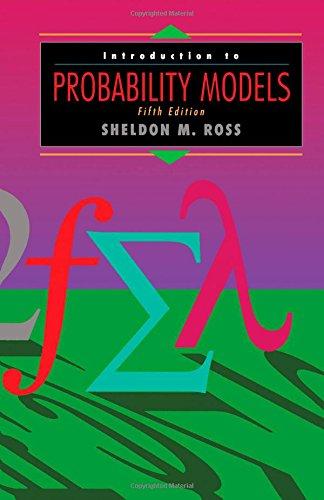*33. Consider two M/M/l queues with respective parameters ki9 ,, / = 1,2. Suppose they share a...
Question:
*33. Consider two M/M/l queues with respective parameters ki9 ì,,
/ = 1,2. Suppose they share a common waiting room that can hold at most 3 customers. That is, whenever an arrival finds his server busy and 3 customers in the waiting room, then he goes away. Find the limiting probability that there will be ç queue 1 customers and m queue 2 customers in the system.
Hint: Use the results of Exercise 28 together with the concept of truncation.
Fantastic news! We've Found the answer you've been seeking!
Step by Step Answer:
Related Book For 

Question Posted:






